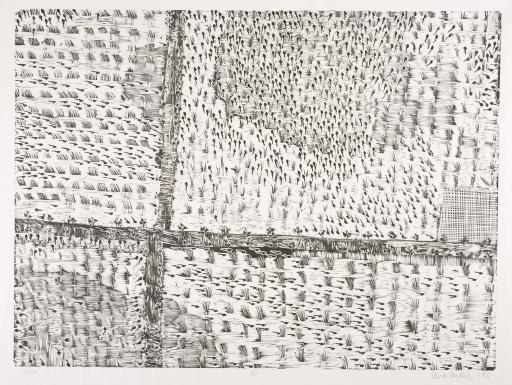Rice field, Xu Bing
Artwork Overview
Xu Bing, artist
born 1955
Rice field,
1986
Portfolio/Series title: The Pastoral Woodcut Series
Where object was made: Beijing, China
Material/technique: woodcut
Dimensions:
Image Dimensions Height/Width (Height x Width): 545 x 740 mm
Image Dimensions Height/Width (Height x Width): 21 7/16 x 29 1/8 in
Plate Mark/Block Dimensions (Height x Width): 545 x 740 mm
Plate Mark/Block Dimensions (Height x Width): 21 7/16 x 29 1/8 in
Mat Dimensions (Height x Width): 29 x 37 in
Frame Dimensions (Height x Width x Depth): 29 1/4 x 38 1/4 x 1 in
Weight (Weight): 10 lbs
Image Dimensions Height/Width (Height x Width): 545 x 740 mm
Image Dimensions Height/Width (Height x Width): 21 7/16 x 29 1/8 in
Plate Mark/Block Dimensions (Height x Width): 545 x 740 mm
Plate Mark/Block Dimensions (Height x Width): 21 7/16 x 29 1/8 in
Mat Dimensions (Height x Width): 29 x 37 in
Frame Dimensions (Height x Width x Depth): 29 1/4 x 38 1/4 x 1 in
Weight (Weight): 10 lbs
Credit line: Museum purchase: Lucy Shaw Schultz Fund
Accession number: 2005.0071
Not on display
If you wish to reproduce this image, please submit an image request



